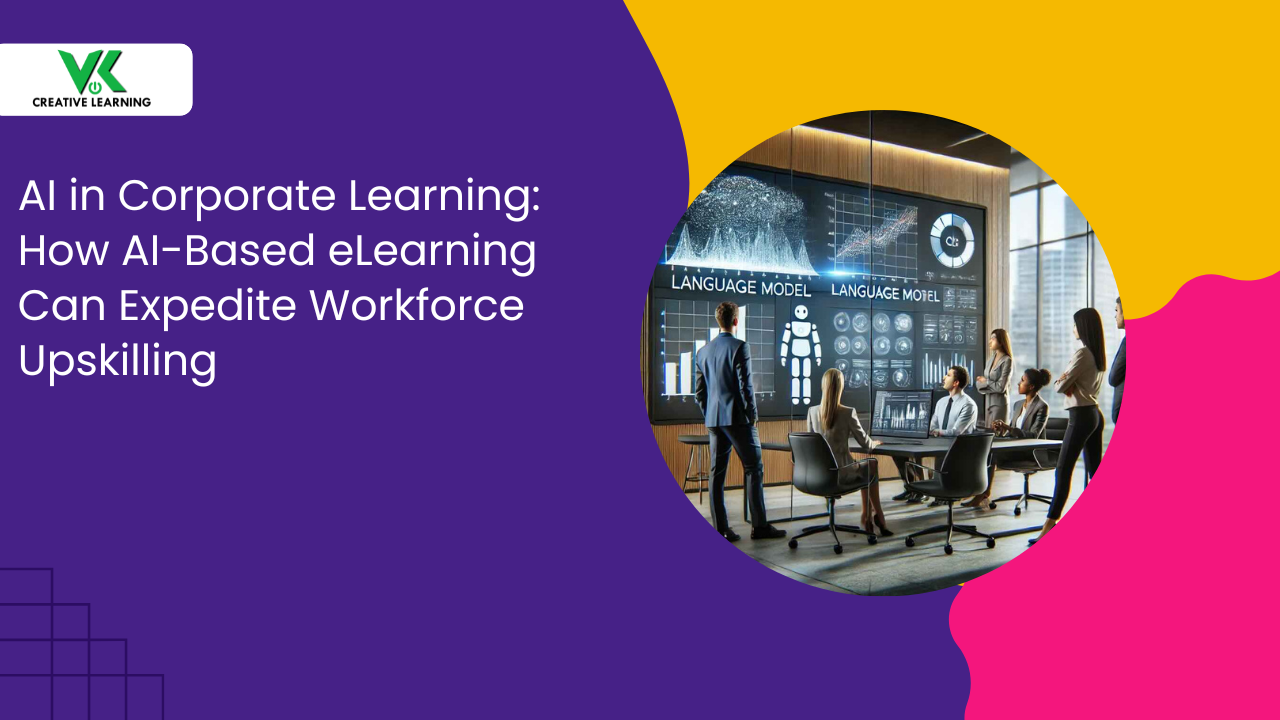Developing an Engrossing Elearning Courseware with ‘Pull Learning’ Content
April 21, 2022
We aspire to provide fascinating and dynamic eLearning courses that learners will enjoy.
That means providing an exceptional learning experience from the minute they access our eLearning content until they finish it completely.
By treating our learners like guests, we motivate them to recognize their own points of necessity and seek out appropriate resources. This is referred to as "Pull" Learning, since learners access the information voluntarily or since they find the content interesting.
It is the polar opposite of "push" education or compulsory learning wherein many eLearning courses are designed in such a way that they simply push content to learners. As a consequence, the course is dense with textual information and devoid of any form of learning engagement.
By altering the way content is structured in an eLearning course, you may immediately provide the groundwork for more interesting and dynamic eLearning courses. It's just a question of reconsidering your course design strategy.
Assume you've completed all of the front-end analyses and are now prepared to develop the course. You have defined your learning goals and have gathered all of the knowledge necessary to accomplish them. Additionally, you want to test the learner's comprehension. Thus, the whole objective is to make the learners understand the information through active engagement.
Factors for developing an eLearning courseware with "Pull Learning" Content
Here are some aspects to consider if you want to maximize the learning through the eLearning content.
1. Consider resources rather than courses
With learners creating their own learning pathway, a curated or customized course with adequate resources is necessary. It may be essential to have a collection of resources from which learners may supplement their knowledge. These materials may use the same combination of video, infographics, and eLearning as a regular course would. However, you may choose to concentrate on resources that users utilize on an as-needed basis, such as work aids such as quick-start manuals and checklists.
Simply arranging a resource base does not imply that you are delivering static information. There is still plenty of room for all modes of instruction, including diagnostics, exercises, quizzes, games, and even organized examinations.
2. Make information easily locatable
If you're going to establish a resource base, you need to ensure that others are aware of its location. A platform — whether it is an LMS, an intranet, or anything else – must provide simple and rapid access to content.
Consider the importance of effective categorization and search tools. If learners are going to be seeking for content at the time of need, consider the devices that may help you to achieve your objective.
3. Make use of real-world examples.
To offer successful learning, you want to anticipate the queries, conflicts, and emotions that your audience will experience as they engage with your information. Scenarios allow learners to understand a concept well in a setting that closely resembles real-world scenarios. This strategy allows you to mimic your learner's surroundings and encourage them to make decisions in a fail-safe manner.
4. Using intriguing writing for generating interest
Using scripting to generate interest, reinforce learning, and simplify visual representation will result in a more engaged spectator. Thus, it is always recommended to use brief phrases and declarations, active voice, strong verbs, and definite nouns. Consider "images" rather than "words" while writing, and your creation will need less difficult judgments.
5. Incorporate microlearning into the 'eLearning courseware'
Utilize the concept of Microlearning, which is breaking your information down into manageable chunks that cover self-contained topics. This is an effective method to approach a pull strategy. If you're developing training for a new sales process, you may want to include a review of features, opportunities, and benefits. Perhaps it would be best suited for those learners who are seeking out for precise information or a learning module based on a topic.
6. Consider all essential elements for learners' engagement
To ensure engagement, begin by determining what your learners will need to do differently to successfully complete your program. Understanding this aspect enables you to design a learning experience that learners would find interesting.
Consider the difficulties and obstacles that the learners will confront in altering their behavior. Evaluate the tools that would be necessary to do the work properly. Provide printed work aids, online information bases, and reminders to take care of the environment. By focusing on relevance, you may significantly increase learners' engagement.
7. Ensure that the learners will get what he wants
At times, it might be difficult to interest learners in particular issues. Thus, it may make sense to emotionally engage the learner first and give them the assurance that they will get to learn everything they wanted to, before starting the meat topics of the course material.
Consider the perspective of a learner who is looking out for knowledge upgrading. The first thing they want is assurance that the learning will address the need that drew them there in the first place. Therefore, ensure that it is apparent from the outset what the learner will get from their time.
8. Contextualization is essential
It's critical to understand what matters to your audience when they're at work, doing the tasks for which you're training. This is the aspect of your 'eLearning training program' that you wish to implement. You want to account for how on-the-job circumstances and real-world contexts affect learning in your training. Include recognizable surroundings, products, and visuals that seem to have originated from your learner’s workplace, and characters who resemble actual people – in short, stick to workplace scenario examples wherever feasible.
9. Use animation and video to provide visual appeal.
Because our viewers do not live in a static environment, why should our presentations be flat and informative in nature? Media integration into our 'eLearning programs' does not need sophisticated software or visuals. Indeed, a little bit of inventiveness goes a long way! By incorporating media into your programs, you may create a visually varied experience. Utilize true-to-life visuals in the eLearning applications, as well as built-in capabilities for motion and effects, and this way, you'll effectively communicate your point.
10. Pay attention to your audience
Once your learning is fully operational, get feedback to ensure that it is meeting your objectives. Conduct focus groups to ascertain your audience's desires and needs. Ask for feedback and pay attention to the feedback, provided by the learners and incorporate them into the eLearning modules. After all, a pull approach is all about having the appropriate information accessible quickly, and only local experts can provide that insight.
If you would like to create eLearning solutions for your professional learners using "Pull Learning," please contact us - VKCL. We have been developing eLearning solutions based on the Pull Learning technique for a variety of businesses across a variety of industries.




